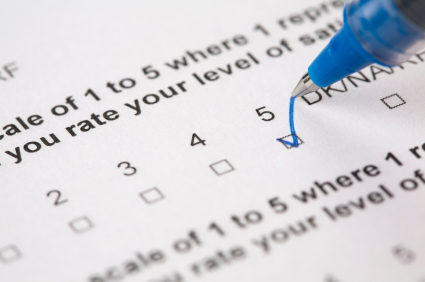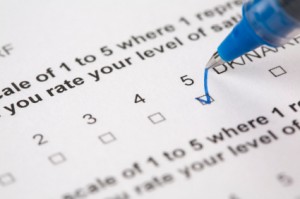- Desired data in Planning of Sample Surveys
- The main stages of a survey are planning, data collection and data processing. Some of the important aspects involved in the planning and execution of a sample survey may be classified under the following heads:
- i. Specification of Data Requirements
- The main stages of a survey are planning, data collection and data processing. Some of the important aspects involved in the planning and execution of a sample survey may be classified under the following heads:
When specifying the data requirements, the sampler should always include the following points:
- Statistical statement of the desired information
- Clear specification of the domain on study
- Form of data which are to be collected and limitations of budget
- Degree of precision aimed at
- ii. Survey Reference and Reporting Periods
From the operational point of view, it is desirable to decide about these periods well in advance. The survey period is the time period during which the required data are collected. It is advisable to divide the survey period into shorter sub-periods to ensure an even representation of the sample. The reference period is the time period to which the data information should refer. It depends on the objective of the survey. For different items there may be different reference periods. The reporting period is the time period for which the information is collected for a unit and is determined by the nature and condition of the survey. For technical considerations there may be different reporting periods for different items, but from the operational point of view it is desirable to use the same reference period for all items as far as possible.
- iii. Preparation of Sampling Frame
Since the sampling frame decides the structure of the survey and its design, it is necessary to pay adequate attention to the preparation and an up-to-date and accurate sampling frame. Even if some resources are to be spent on such work, it will be worthwhile.
- iv. Choice of Sampling Design
A decision about an optimum sampling design, after taking the various technical, operational and risk factors into consideration, plays a very significant part. The principle of optimisation should always be kept in mind, i.e., to achieve
- Either a given degree of precision with a minimum cost, or
- The maximum possible precision with a fixed cost.
- v. Method of Data Collection
The planning and execution of a survey is influenced to a large extent by the method of data collection. After a very careful examination of the frame, design, budget and objectives of the survey, a decision should be taken regarding the choice of method of data collection, i.e., to collect primary data or to use secondary data. In case the primary data is to be collected, a clear-cut mode of collection should be given as to whether data are to be collected by personal interview, mail enquiry, physical measurement, etc. To maintain uniformity, it is necessary to give detailed field instructions.
- vi. Field Work and Training of Personnel
It is essential that the personnel should be thoroughly trained in locating sample units and the methods of collection of required data, before starting field work. The staff should be trained well, not only in the statistical aspects but also in the art of eliciting correct information from different sources.
- vii. Processing of Survey Data
Processing of the collected data in a survey may be broadly classified under the following heads:
- Scrutiny and editing of data
- Tabulation of data
- Statistical analysis
It is, therefore, necessary to plan the survey work in such a way that the flow of work-material through various stages of data processing ensures the desired degree of precision in survey results.
- viii. Preparation of Reports
The guidelines, as formulated by the United Nations (1949), for preparation of sample-survey reports should be adequate for the purpose. The report may have sections such as objectives; scope; subject coverage; method of data collection; survey reference and reporting periods; sampling design and estimation procedure; tabulation procedure; presentation of results; accuracy; cost structure; responsibility; and references. It may be useful to give a summary of the main results which can be used by financing agency for policy decisions.
- Sampling and Non-Sampling Errors
The errors involved in collection, processing and analysis of the data in a survey may be classified as:
- i. Sampling error, and
- ii. Non-Sampling error.
- i. Sampling Error
- The error which arises due to only a sample being used to estimate the population parameters is termed sampling error or sampling fluctuation. Whatever may be the degree of cautiousness in selecting a sample, there will always be a difference between the population value (parameter) and its corresponding estimate.
- This error is inherent and unavoidable in any and every sampling fluctuation. A sample with the smallest sampling error will always be considered a good representative of the population. This error can be reduced by increasing the size of the sample. In fact, the decrease in sampling error is inversely proportional to the square root of the sample size. When the sample survey becomes a census survey, the sampling error becomes 0.
- ii. Non-Sampling Error
- Besides sampling error, the sample estimate may be subject to other error which, grouped together, are termed non-sampling error. The main sources of non-sampling errors are:
- i. Failure to measure some of the units in the selected sample,
- ii. Observational errors due to defective measurement technique,
- iii. Errors introduced in editing coding and tabulating the results.
- Besides sampling error, the sample estimate may be subject to other error which, grouped together, are termed non-sampling error. The main sources of non-sampling errors are:
- In practice, the census survey results may suffer from non-sampling errors although these may be free from sampling error. The non-sampling error is likely to increase with increase in sample size, while sampling error decreases with increase in sample size.
Click here for government certification in Statistics and Quality





5 Comments. Leave new
Good effort! !
Good efforts.. Nice article..
Great work!
great!!
great…